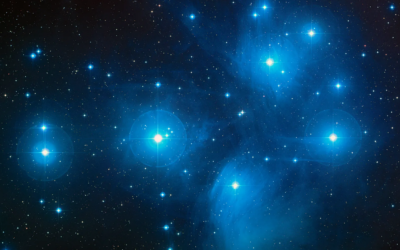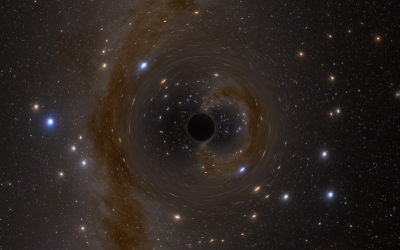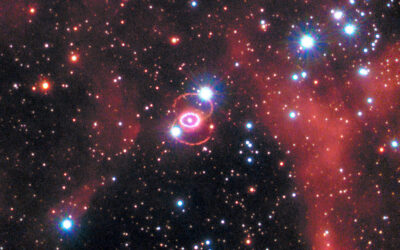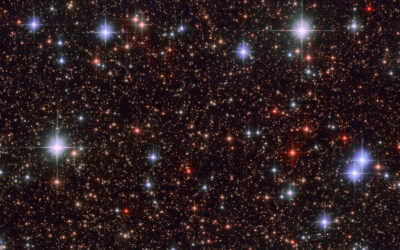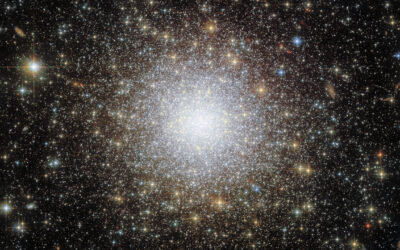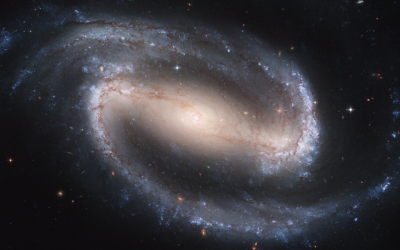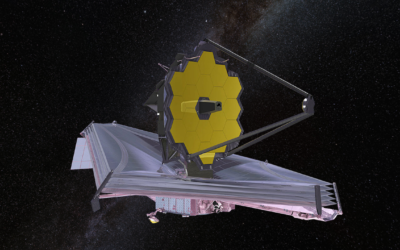ARTICLE ARCHIVES

A Refutation of Phillip Dennis’s Claims Regarding Alleged Inconsistencies in ASC
Did Phillip Dennis actually disprove the conventionality thesis (Dennis 2024)? Did he really prove at long last what physicists over the last century have been unable to do – to establish that the one-way speed of light in any given direction must be the same as the round-trip speed of light? Did he find any genuine inconsistency with the Anisotropic Synchrony Convention (ASC) and the young universe model upon which it is based? Well, no to all of the above…. We show below that when the full synchrony-independent equations are used, they do not support Dennis’s conclusion but rather the opposite. Furthermore, we will demonstrate several critical errors in Dennis’s analysis and show that several of his claims are incompatible with the physics of relativity.
Stellar Astronomy: Part 8 – Stellar Clusters and Populations
Stars often exist as binary pairs – two or more stars that orbit their common center of mass. However, even larger numbers of stars can exist in close proximity to each other – a star cluster – which can consist of hundreds to hundreds of thousands of stars. Single stars, binaries, and star clusters exist as part of a much larger structure – a galaxy – which can contain millions to trillions of stars. Furthermore, the composition of stars varies slightly in a way that depends on where they are found.
Stellar Astronomy: Part 7 – Black Holes
In the previous article, we examined white dwarfs and neutron stars, objects with the mass of a star compressed into a very small volume. Some of these objects could be what remains of a star that has collapsed in on itself. But what happens when mass is compressed into an even smaller volume?
Stellar Astronomy: Part 6 – White Dwarfs and Neutron Stars
In a star, the outward flow of energy generated by nuclear fusion in the core balances the inward pull of gravity. Without such fusion, a star would collapse into a very small volume. And indeed, the universe contains objects with a mass comparable to that of a star, but with a size comparable to the Earth. These are called white dwarfs.
Stellar Astronomy: Part 5 – Variable Stars
How do stars change over time? In parts 3 and 4, we discussed some of the scenarios secular astronomers have proposed for stellar evolution. These included the now-discredited idea that stars evolve along the main sequence from blue to red, along with modern ideas of giants and supergiants being aged stars. Unfortunately, such long-term changes cannot be observed and therefore are beyond the scope of operational science. Nonetheless, some stars change in ways that have been observed in history, and some types of changes are even observable in the present. In particular, stars can change in luminosity, appearing either brighter or fainter over time. These are called variable stars.
Stellar Astronomy: Part 4 – Of Dwarfs and Supergiants
It is rather amazing what we can know about stars simply by analyzing their light and with rigorous application of logic and mathematics. We can measure the distance to any nearby star using parallax. And by multiplying a star’s apparent brightness by the square of its distance, we can determine its actual luminosity. Furthermore, we can know both the composition and the surface temperature of a star by analyzing the absorption lines of its starlight using a spectroscope. This led to the field of stellar classification and the discovery of the main sequence. But why does this sequence exist? Why are blue main sequence stars so much brighter than red main sequence stars?
Stellar Astronomy: Part 3 – Classes and the Main Sequence
With the technology available in the nineteenth and twentieth centuries, astronomers made a number of wonderful discoveries about the nature of stars. These included knowledge of the true luminosity of stars as well as their chemical composition and temperature. Although all stars have a similar chemical composition, they come in a wide variety of luminosities and temperatures. As more stars were catalogued, astronomers began to notice a pattern. Secular, evolutionary thinking led to some false interpretations about the cause of this pattern. This lesson in history is an important one for us today.
Stellar Astronomy: Part 2 – The Composition of Stars
In part 1, we examined how to measure the distance to relatively nearby stars using parallax. We then showed how astronomers compute the luminosity of a star by comparing its apparent brightness with its distance. This shows that stars are comparable in brightness to the sun. But how do we know that stars have the same composition as the sun? For that matter, how do we know what the sun is made of?
Stellar Astronomy: Part 1 – Distance and Brightness
You can look up just about any star on the internet and find all kinds of fascinating information based on good science: its size, composition, luminosity, distance, coordinates, and so on. But you will also read information that is not accurate because it is based on antibiblical assumptions, such as the star’s estimated age and stage of evolution. Therefore, it is very useful to know something about the history of stellar astronomy to see how we know what we know, and to discern what we really know from what is merely claimed.
Was Paul an Apostle?
We receive all sorts of interesting messages here at the Biblical Science Institute. This one came in some time ago from someone we’ll call “Simon.” Simon seems to deny that the New Testament books authored by Paul are Scripture. Let’s examine Simon’s reasoning.
Mature Galaxies Continue to Challenge Secular Models
The James Webb Space Telescope (JWST) has again revealed evidence that challenges the secular origins story and confirms biblical creation. A team of researchers has discovered evidence of a barred spiral galaxy in the distant universe. This is further evidence that mature galaxies exist at a distance where the secular view predicted only “infant” galaxies should exist.
JuMBOs in the Orion Nebula
New images from the James Webb Space Telescope have revealed a previously unknown class of objects: Jupiter Mass Binary Objects (JuMBOs). These are free-floating objects that orbit their common center of mass, not a star. The existence of such objects challenges secular formation scenarios and provides new insight for creation research.
When Were the Dinosaurs Made?
We received the following e-mail from Hans who has criticized my presentation on Dinosaurs and the Bible. I put his message in purple text with my response in black.
The Ethics of Science: Part 2
In part 1, we covered the biblical basis for the scientific method. It is based on God’s faithfulness and is necessary due to man’s fallibility. The procedures of science are intended to reduce the most common errors in reasoning, particularly the confirmation bias. The main point of a Ph.D. program is to train students to properly interpret data by following proper protocol. This can lead to new discoveries. However, there is a right way and a wrong way to report such discoveries.
The Ethics of Science: Part 1
Scientists use a particular method to make new discoveries about how the universe works. They also have a specific process of informing the world of their discoveries. All ethical scientists follow these procedures whether they are Christians or non-Christians. However, the protocols by which scientists conduct and publish research are rooted in the biblical worldview and cannot be justified apart from it. This demonstrates the truth of the Bible. And it also allows us to distinguish genuine scientific research from fraud.

